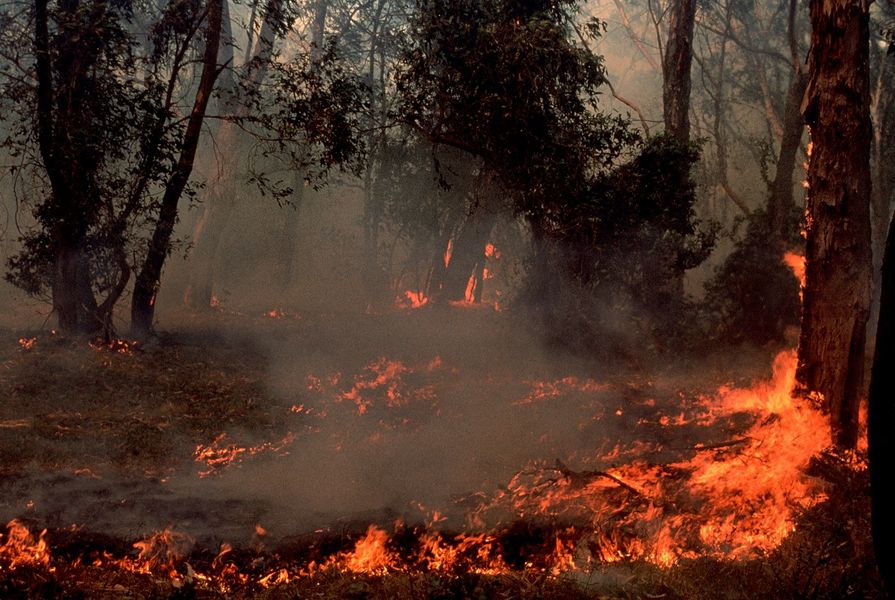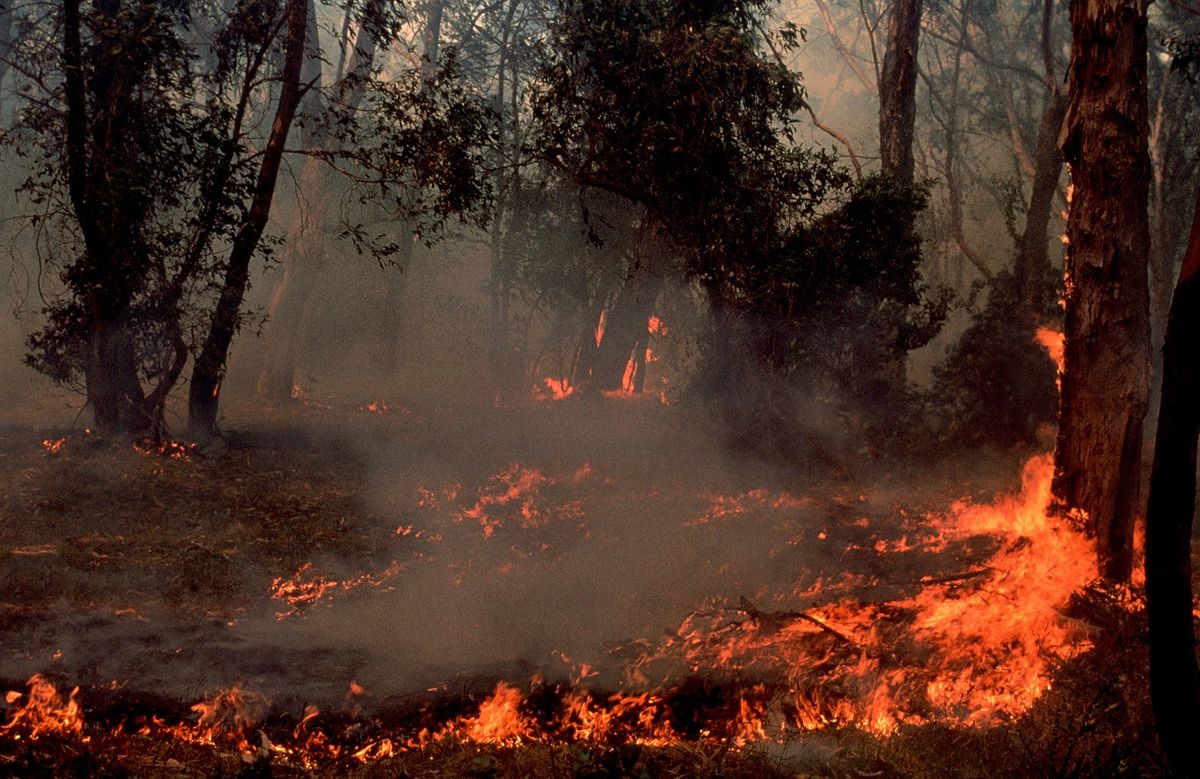Melbourne practice Urban Initiatives worked on a number of projects following the 2009 Black Saturday fires, including the reconstruction of the Victorian town of Marysville, the facilitating of community-led processes associated with the reconstruction process and the design of bushfire memorials, including the Strathewen community memorial and the Mitchell Shire Council’s and Whittlesea City Council’s memorials. In an interview with Landscape Australia editor Emily Wong, director Tim Hart emphasizes the importance of listening and long-term strategizing when working with recovering communities.
Emily Wong: Rebuilding has begun in some locations, even while the fire season continues and many other places are still at risk. What would you suggest to landscape architects who are interested in helping?
Tim Hart: Aside from offering financial support to victims and being involved in political lobbying around climate change, the real opportunities for landscape architects and designers to assist in post-bushfire recovery really come further down the track. At the moment, the primary focus in post-bushfire areas is on the clean-up, housing and the restoration of essential services – which all takes time. It’s difficult for landscape architects and designers to get too involved when people don’t have places to live. In the case of the Black Saturday fires, this was a six to twelve-month process. But once some level of normality begins to return to these areas, that’s when our role as landscape architects really kicks in.
EW: You worked on the Marysville reconstruction following Black Saturday. Do you have a sense of other areas (in post-bushfire contexts) where landscape architects might have an impact?
TH: I do think the opportunities to assist lie mostly in civic projects. After Black Saturday, the restoration of some of the significant heritage gardens that had been destroyed, in Marysville and other areas, were projects that people could contribute to. Another impact of bushfires is that of erosion. When you have a denuded landscape, heavy rainfall can often have a terrible impact, causing erosion, sink holes and the washing away of the topsoil layer. This is an issue I imagine reconstruction authorities around the country will need to be across quite early – and again landscape architects may have a role to play in looking at strategies for mitigating erosion, managing weed growth and strategizing restoration ecology. All of these aspects need to be considered while the window is open, before it’s too late. Previously in Victoria, following the 2009 fires, there were major issues with erosion and blow-outs in areas where the fires had been through and a lot of topsoil and plants were lost. Some of these areas are still recovering.
In terms of town reconstructions, potentially the rebuild process can be quite a healing and positive process, with opportunities for communities to work together, and bring community members who didn’t know each other before together, to restore and rebuild what they have lost. Ensuring that landscape architects and those involved are actually open to these processes and opportunities is really important. It’s a tricky to know how such situations will unfold exactly, but there are some really good opportunities to strengthen these communities, both in terms of the quality of the built environment in which they live and the bonds between members during the design process.
EW: How did you become involved with the Marysville reconstruction?
We had actually been involved with the town prior to the fires, having completed a major street upgrade project there, some five years prior. When the fire came through in 2009 and everything was burnt, we went to the Victorian Bushfire Reconstruction and Recovery Authority and offered our services to help rebuild the town on a pro bono basis. At that time, as will probably be the case right now, the authority didn’t need anything from us – streetscape reconstruction wasn’t the focus at that particular time and it wasn’t until almost a year later that we actually got involved. Having an established relationship with the community and an understanding of the sense of place, in that case, did make the process a little easier.
EW: What have been your experiences working in the wake of the Black Saturday fires? Engaging with communities that have experienced immense trauma and continuing stress must place significant pressure on those who have come to assist.
TH: The projects we did following the 2009 fires were some of the most interesting and rewarding in terms of community-client relationships that I have done in thirty years. But there is a big emotional toll. It is really tricky, especially when you’re dealing with memorials acknowledging the loss of lives. In the end we had to say no to a few memorial projects. But the good thing was that at the time we were able to connect with John Richardson, national resilience advisor at the Red Cross and a specialist in trauma recovery processes. A really positive development since then is that there is now much more research and work on working with communities in these contexts to draw from. Acknowledging loss is different for different people, and having some of that individuality come out in a design – whether a streetscape or memorial – is critical. At the same time, communities don’t necessarily want to be reminded, everyday, of the event. It’s vital these things are taken into consideration.
EW: You’ve mentioned the process of the reconstruction needs to be handled very sensitively. Do you have any advice for designers interested in taking on these projects?
Definitely. And on that, the key for landscape architects in these areas is to be open and to listen - the reconstruction should be a positive part of the recovery, but will only be so if people listen to those affected. When we were working with communities, often specialists would come in from outside the town and tell the locals what they should do and had to do – residents really reacted against that, it created a lot of ill-will. So, it’s very important for landscape architects to understand what a community feels is valuable about their town and to try to ensure that that sense of place and the area’s unique landscape qualities are reflected in any reconstruction.
Of course, there is often the opportunity to do more than just put back what they had - ways to improve what wasn’t working so well before with new parkland spaces, street tree planting, and better public connections. But really listening to the community in terms of what they want and need is the crucial thing.
EW: How much scope is there for expanding the skills of landscape architects in tackling post-bush-fire rebuilds?
TH: The whole climate is undergoing significant change and we, as landscape architects, need to be considering other areas that are bushfire prone and be responding through design accordingly. Staying on top of technologies that might be incorporated into these processes might be one way of trying to grapple with these accelerating changes more effectively. Under extreme climate change scenarios, some facilities may not be suitable for reconstruction in their original location.
Read the Australian Institute of Landscape Architect’s bushfire response, here.












